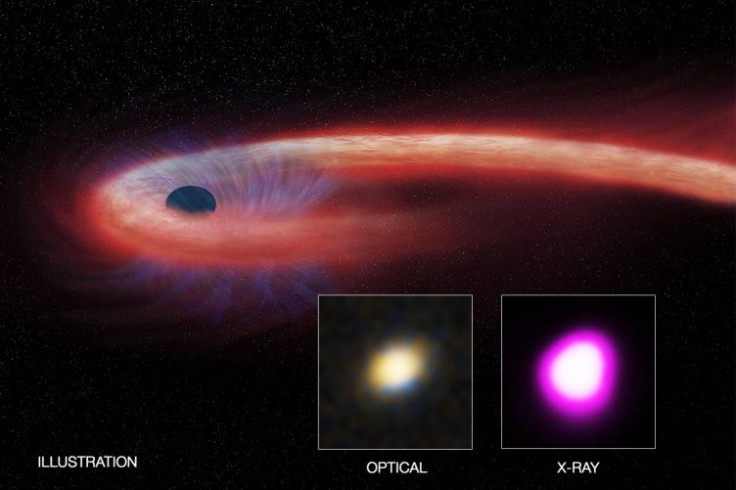Following Galaxy Mergers, Supermassive Black Holes Swallow One Star Every Year: Study

When it comes to an appetite that is both indiscriminate and voracious, there is probably only one thing that can beat a black hole: a supermassive black hole. And a new study suggests these enormous objects that reside at the centers of many large galaxies could be consuming even more matter than was previously thought.
Black holes absorb everything that comes within their event horizon, even light, giving them their name. Sometimes, a passing star is unfortunate enough to get too close to a supermassive black hole, which does to the star the same things as it does to anything else within its event horizon — spaghettification.
Called a tidal disruption event, the phenomenon of a supermassive black hole ripping a star to shreds has been observed only a few times. But the new study says the actual incidence of TDEs could be a lot more frequent, when looking at galaxies that have recently undergone mergers.
The gravity of a supermassive black hole causes stars in its vicinity to form a nuclear star cluster around it. According to standard gravitational physics, these clusters would be spherical in their symmetry, but disk-shaped asymmetrical star clusters have been observed in many galaxies, such as in the neighboring Andromeda. Such disks are thought to be a result of relatively recent mergers between two gas-rich galaxies.
As the stars within the nuclear cluster orbit the supermassive black hole in an eccentric disk, the orbits are mostly elliptical, bringing them within the gravitational influence of each other. And that influence can push a star very close to the supermassive black hole, leading to a TDE.
“The force builds up in these stellar orbits and changes their shape. Eventually, a star reaches its nearest approach to the black hole and it gets shredded,” Ann-Marie Madigan, an assistant professor at University of Colorado, Boulder, and leader of the study, said in a statement Thursday.
And the study predicted this happens quite often.
“We predict that in a post-galactic merger period, a supermassive black hole will swallow one star per year. That’s 10,000 times more often than other rate predictions,” study coauthor Heather Wernke, a graduate student at the university, said in the statement.
The study provides some theoretical evidence for observations that show some galaxies with supermassive black holes in their centers to have higher rates of star deaths than some others. It also suggests eccentric disks of nuclear star clusters could be more commonplace in the universe than previously thought.
“Andromeda is likely past the peak of this process, having undergone a merger long ago. But with higher resolution data, we may be able to find younger eccentric disks in more distant galactic nuclei,” Madigan said.
Titled “Dynamical Properties of Eccentric Nuclear Disks: Stability, Longevity, and Implications for Tidal Disruption Rates in Post-merger Galaxies,” the study appeared online Thursday in the Astrophysical Journal. Coauthors include researchers from University of California at Berkeley and Santa Barbara, Princeton University and University of Leicester, United Kingdom.
© Copyright IBTimes 2024. All rights reserved.











